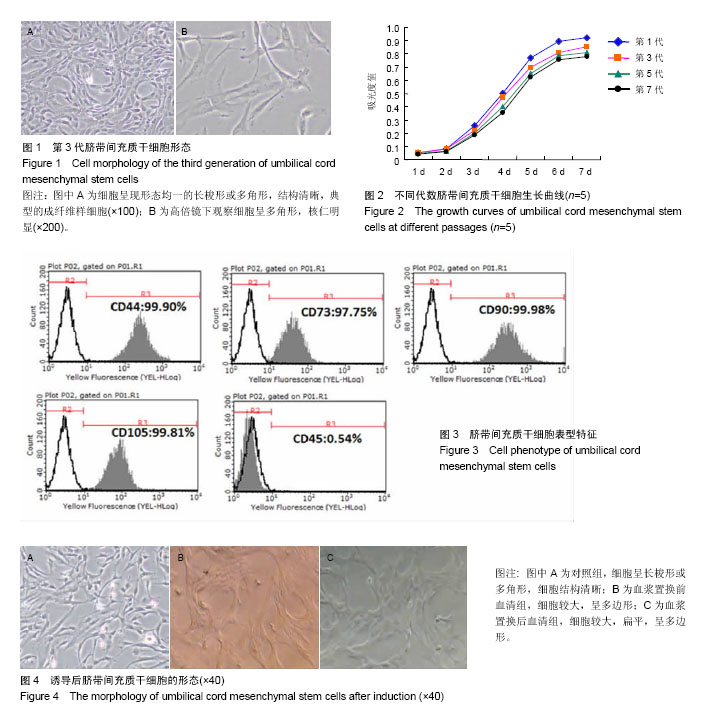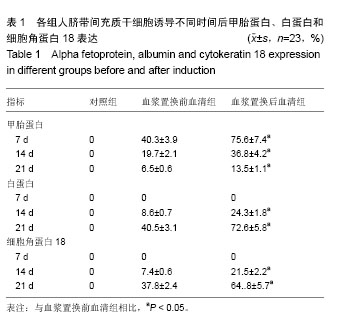| [1] Mendizabal M, Silva MO. Liver transplantation in acute liver failure: A challenging scenario. World J Gastroenterol. 2016; 22(4):1523-1531. [2] Kirnap M, Akdur A, Ozcay F, et al. Liver Transplant for Fulminant Hepatic Failure: A Single-Center Experience. Exp Clin Transplant. 2015;13(4):339-343.[3] McCaughan GW, Crawford M, Sandroussi C, et al. Assessment of adult patients with chronic liver failure for liver transplantation in 2015: who and when. Intern Med J. 2016;46(4):404-412.[4] Nevens F, Laleman W. Artificial liver support devices as treatment option for liver failure. Best Pract Res Clin Gastroenterol. 2012;26(1):17-26.[5] Naruse K, Tang W, Makuuch M. Artificial and bioartificial liver support: a review of perfusion treatment for hepatic failure patients. World J Gastroenterol. 2007;13(10):1516-1521.[6] Kobayashi N. Life support of artificial liver: development of a bioartificial liver to treat liver failure. J Hepatobiliary Pancreat Surg. 2009;16(2):113-117.[7] Kestendjieva S, Kyurkchiev D, Tsvetkova G, et al. Characterization of mesenchymal stem cells isolated from the human umbilical cord. Cell Biol Int. 2008;32(7):724-732.[8] Jin HJ, Bae YK, Kim M,Comparative analysis of human mesenchymal stem cells from bone marrow, adipose tissue, and umbilical cord blood as sources of cell therapy.Int J Mol Sci. 2013;14(9):17986-18001.[9] 张惟,陈松,王继明,等.人脐带间充质干细胞向神经细胞分化的实验研究[J].临床眼科杂志,2015,23(4):365-370.[10] Wang YK, Chen CS. Cell adhesion and mechanical stimulation in the regulation of mesenchymal stem cell differentiation. J Cell Mol Med. 2013;17(7):823-832.[11] Xue HL, Zeng WZ, Wu XL, et al. Clinical therapeutic effects of human umbilical cord-derived mesenchymal stem cells transplantation in the treatment of end-stage liver disease. Transplant Proc. 2015;47(2):412-418.[12] Shi M, Zhang Z, Xu R, et al. Human mesenchymal stem cell transfusion is safe and improves liver function in acute-on-chronic liver failure patients. Stem Cells Transl Med. 2012;1(10):725-731.[13] Pons-Estel GJ, Salerni GE, Serrano RM, et al. Therapeutic plasma exchange for the management of refractory systemic autoimmune diseases: report of 31 cases and review of the literature. Autoimmun Rev. 2011;10(11):679-684.[14] Maiwall R, Moreau R. Plasma exchange for acute on chronic liver failure: is there a light at the end of the tunnel. Hepatol Int. 2016;10(3):387-389.[15] Kribben A, Gerken G, Haag S, et al. Effects of fractionated plasma separation and adsorption on survival in patients with acute-on-chronic liver failure. Gastroenterology. 2012;142(4): 782-789.e3.[16] Romanov YA, Svintsitskaya VA, Smirnov VN. Searching for alternative sources of postnatal human mesenchymal stem cells: candidate MSC-like cells from umbilical cord. Stem Cells. 2003;21(1):105-110.[17] Covas DT, Siufi JL, Silva AR, et al. Isolation and culture of umbilical vein mesenchymal stem cells. Braz J Med Biol Res. 2003;36(9):1179-1183.[18] Wang HS, Hung SC, Peng ST, et al. Mesenchymal stem cells in the Wharton's jelly of the human umbilical cord. Stem Cells. 2004;22(7):1330-1337.[19] Kisiel AH, McDuffee LA, Masaoud E, et al. Isolation, characterization, and in vitro proliferation of canine mesenchymal stem cells derived from bone marrow, adipose tissue, muscle, and periosteum. Am J Vet Res. 2012;73(8): 1305-1317. [20] Roy S, Arora S, Kumari P, et al. A simple and serum-free protocol for cryopreservation of human umbilical cord as source of Wharton's jelly mesenchymal stem cells. Cryobiology. 2014;68(3):467-472.[21] Cao H, Hui Q, Yan Y, et al. Pretreatments with injured microenvironmental signals altered the characteristics of human umbilical cord mesenchymal stem cells. Biotechnol Lett. 2016;38(1):157-165.[22] Nan C, Shi Y, Zhao Z, et al. Monosialoteterahexosyl ganglioside induces the differentiation of human umbilical cord-derived mesenchymal stem cells into neuron-like cells. Int J Mol Med. 2015;36(4):1057-1062.[23] Raoufil A, Aminil A, Azadbakht M, et al. Production of hepatocyte-like cells from human umbilical vein mesenchymal stem cells. Ital J Anat Embryol. 2015;120(3):150-161.[24] Kocaefe C, Balci D, Hayta BB, et al. Reprogramming of human umbilical cord stromal mesenchymal stem cells for myogenic differentiation and muscle repair. Stem Cell Rev. 2010;6(4):512-522.[25] Liu WW, Yu W, Chen JY, et al. Effects of human umbilical cord mesenchymal stem cells in the treatment of paraquat-induced lung injury. Zhonghua Lao Dong Wei Sheng Zhi Ye Bing Za Zhi. 2012;30(11):811-815. [26] Shi M, Zhang Z, Xu R, et al. Human mesenchymal stem cell transfusion is safe and improves liver function in acute-on-chronic liver failure patients. Stem Cells Transl Med. 2012;1(10):725-731.[27] 刘波,董静,张骏飞.人脐带间充质干细胞治疗慢加急性肝衰竭患者近期疗效与安全性分析[J]. 实用肝脏病杂志, 2013, 16(1): 29-31.[28] 王全楚,张凌云,王东琳.人脐带血间充质干细胞输注治疗慢性肝衰竭患者的近期疗效观察[J].胃肠病学和肝病学杂志, 2013, 22(1):22-24. [29] 曲乃方,王者令,闫兆平,等.38例慢性肝衰竭患者经干细胞治疗48周效果观察[J].中华细胞与干细胞杂志:电子版, 2013,3(2): 73-77.[30] 任红英,赵钦军,刘拥军,等.脐带间充质干细胞体外诱导分化为肝细胞样细胞的研究[J].山东医药, 2008,48(30):24-26. [31] An SY, Han J, Lim HJ, et al. Valproic acid promotes differentiation of hepatocyte-like cells from whole human umbilical cord-derived mesenchymal stem cells. Tissue Cell. 2014;46(2):127-135.[32] Xue G, Han X, Ma X, et al. Effect of Microenvironment on Differentiation of Human Umbilical Cord Mesenchymal Stem Cells into Hepatocytes In Vitro and In Vivo. Biomed Res Int. 2016;2016:8916534.[33] Zheng G, Liu Y, Jing Q, et al. Differentiation of human umbilical cord-derived mesenchymal stem cells into hepatocytes in vitro. Biomed Mater Eng. 2015;25(1 Suppl): 145-157.[34] 薛改,韩华,陈泽纱,等.体外诱导人脐带间充质干细胞定向分化为肝细胞的研究[J].肝脏,2016, 21(9):733-737.[35] 闫俊卿,韩涛,朱争艳. 人脐带间充质干细胞生物学特性及向类肝细胞的分化[J].世界华人消化杂志,2008,16(15):1639-1644.[36] 任红英,赵钦军,刘拥军,等.脐带间充质干细胞体外诱导分化为肝细胞样细胞的研究[J].山东医药,2008,48(30):24-26.[37] Borhani-Haghighi M, Talaei-Khozani T, Ayatollahi M, et al. Wharton's Jelly-derived Mesenchymal Stem Cells can Differentiate into Hepatocyte-like Cells by HepG2 Cell Line Extract. Iran J Med Sci. 2015;40(2):143-151.[38] Zhang YN, Lie PC, Wei X. Differentiation of mesenchymal stromal cells derived from umbilical cord Wharton's jelly into hepatocyte-like cells. Cytotherapy. 2009;11(5):548-558.[39] Kang XQ, Zang WJ, Bao LJ, et al. Fibroblast growth factor-4 and hepatocyte growth factor induce differentiation of human umbilical cord blood-derived mesenchymal stem cells into hepatocytes. World J Gastroenterol. 2005;11(47):7461-7465.[40] Talaei-Khozani T, Borhani-Haghighi M, Ayatollahi M, et al. An in vitro model for hepatocyte-like cell differentiation from Wharton's jelly derived-mesenchymal stem cells by cell-base aggregates. Gastroenterol Hepatol Bed Bench. 2015;8(3): 188-199.[41] Vojdani Z, Khodabandeh Z, Jaberipour M, Hosseini A, et al. The influence of fibroblast growth factor 4 on hepatogenic capacity of Wharton's jelly mesenchymal stromal cells. Rom J Morphol Embryol. 2015; 56(3):1043-1050.[42] Lee KD, Kuo TK, Whang-Peng J, et al. In vitro hepatic differentiation of human mesenchymal stem cells. Hepatology. 2004;40(6):1275-1284.[43] Yan C, Xue G, Wu L, et al. Differentiation of human umbilical cord mesenchymal stem cells into hepatocytes induced by rat fibrotic liver tissue extracts. Zhongguo Xiu Fu Chong Jian Wai Ke Za Zhi. 2015;29(7):878-883.[44] Zhang GQ, Fang CH, Chi DZ. A study of rat mesenchymal stem cells (MSCs) differentiating into liver cells when co-cultured with rat hepatocytes. Zhonghua Gan Zang Bing Za Zhi. 2005;13(9):648-651.[45] 毛德文,邱华.甲胎蛋白对肝衰竭肝细胞再生及预后判定价值的研究[J].实用肝脏病杂志, 2006,9(6):378-380.[46] Lange C, Bassler P, Lioznov MV, et al. Liver-specific gene expression in mesenchymal stem cells is induced by liver cells. World J Gastroenterol. 2005;11(29):4497-4504. |
.jpg)


.jpg)